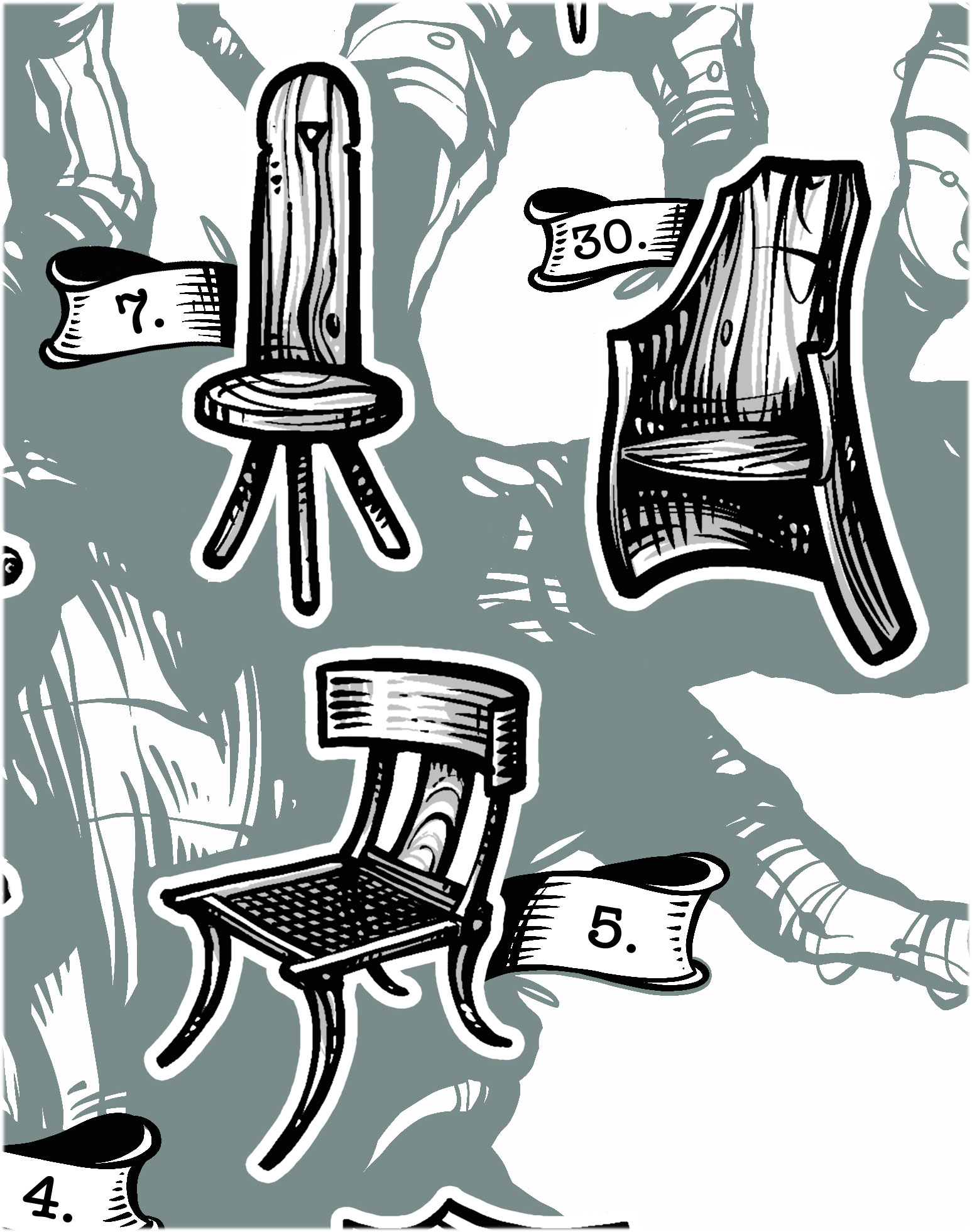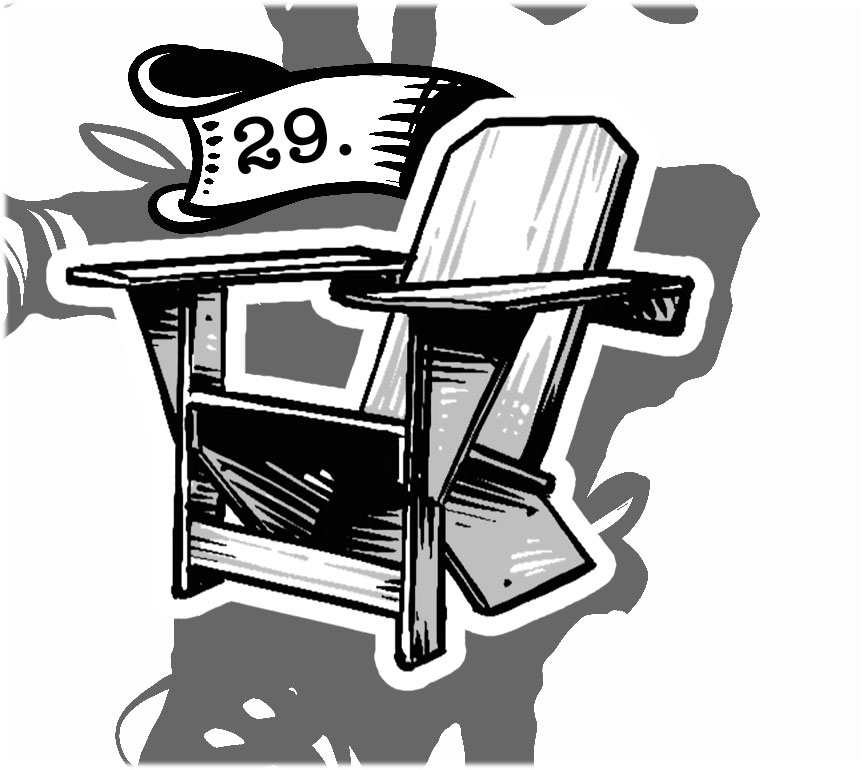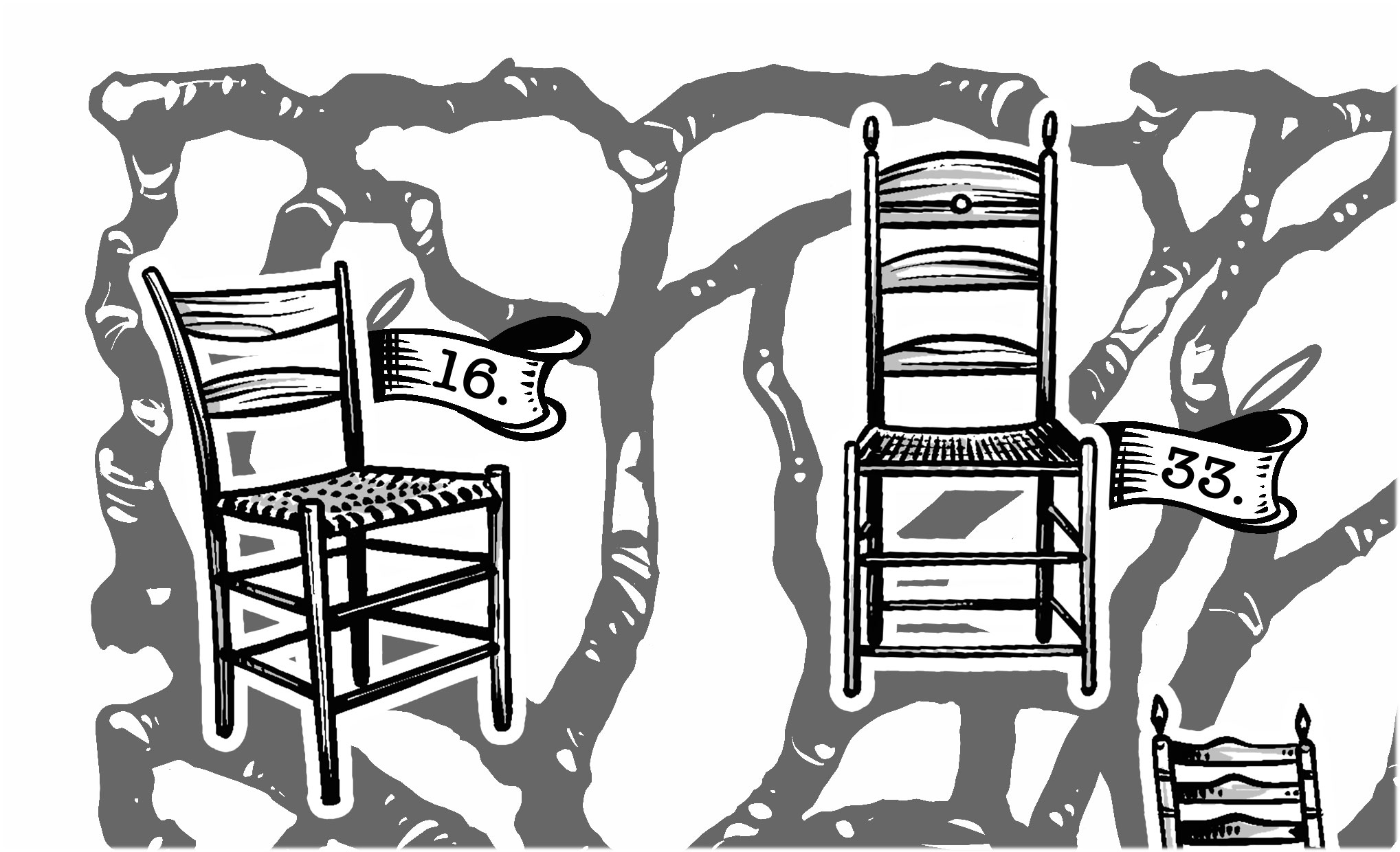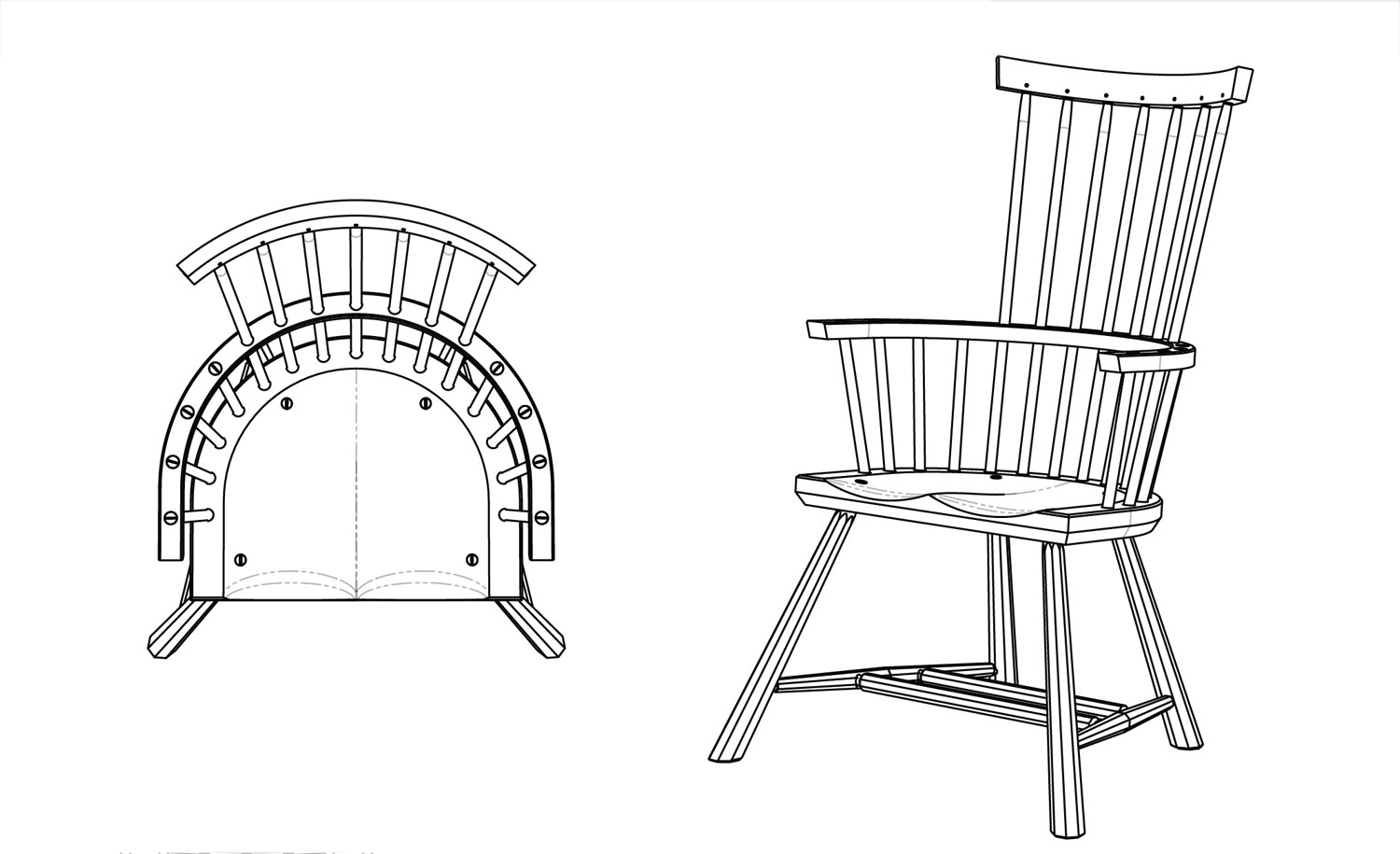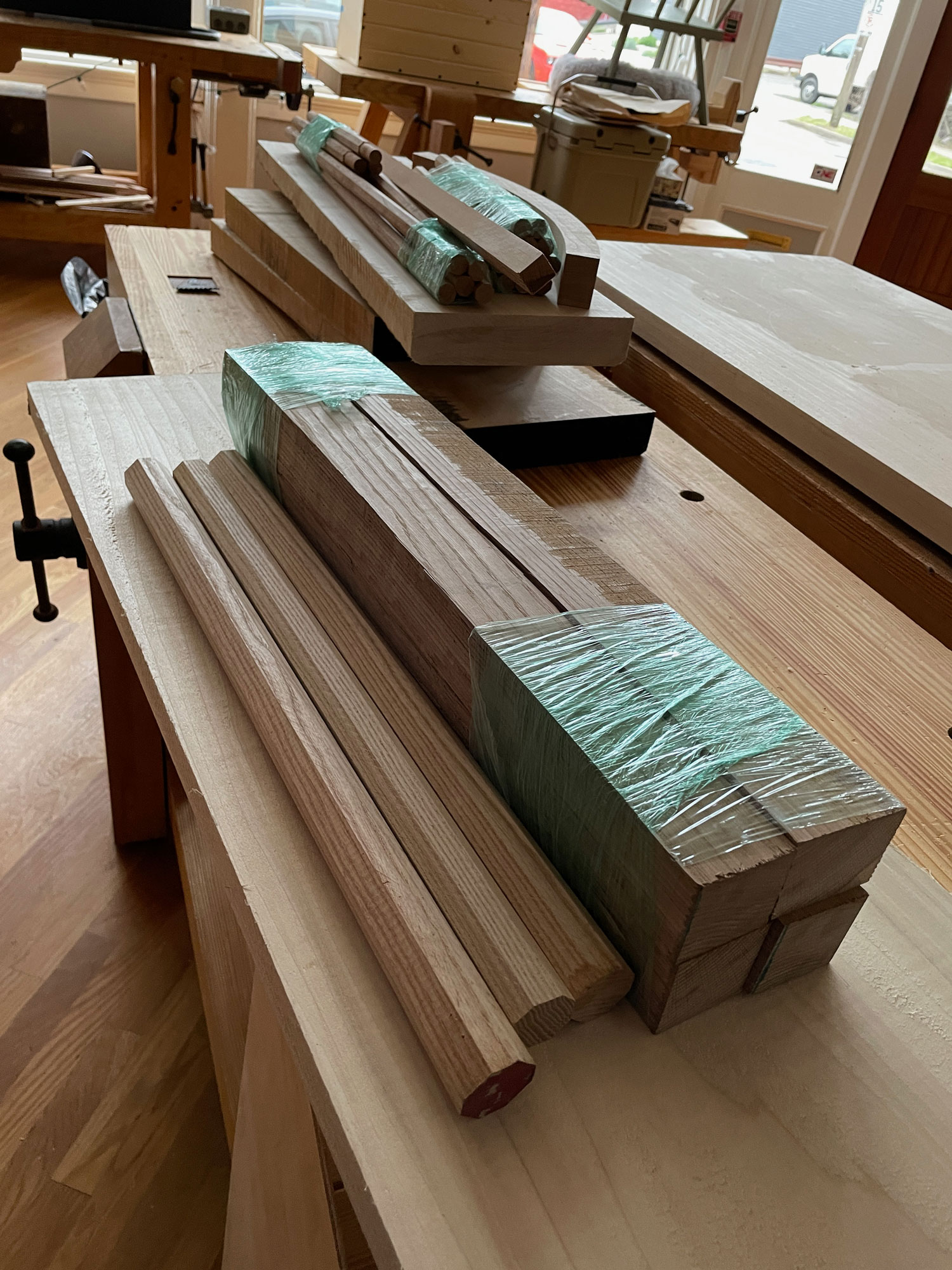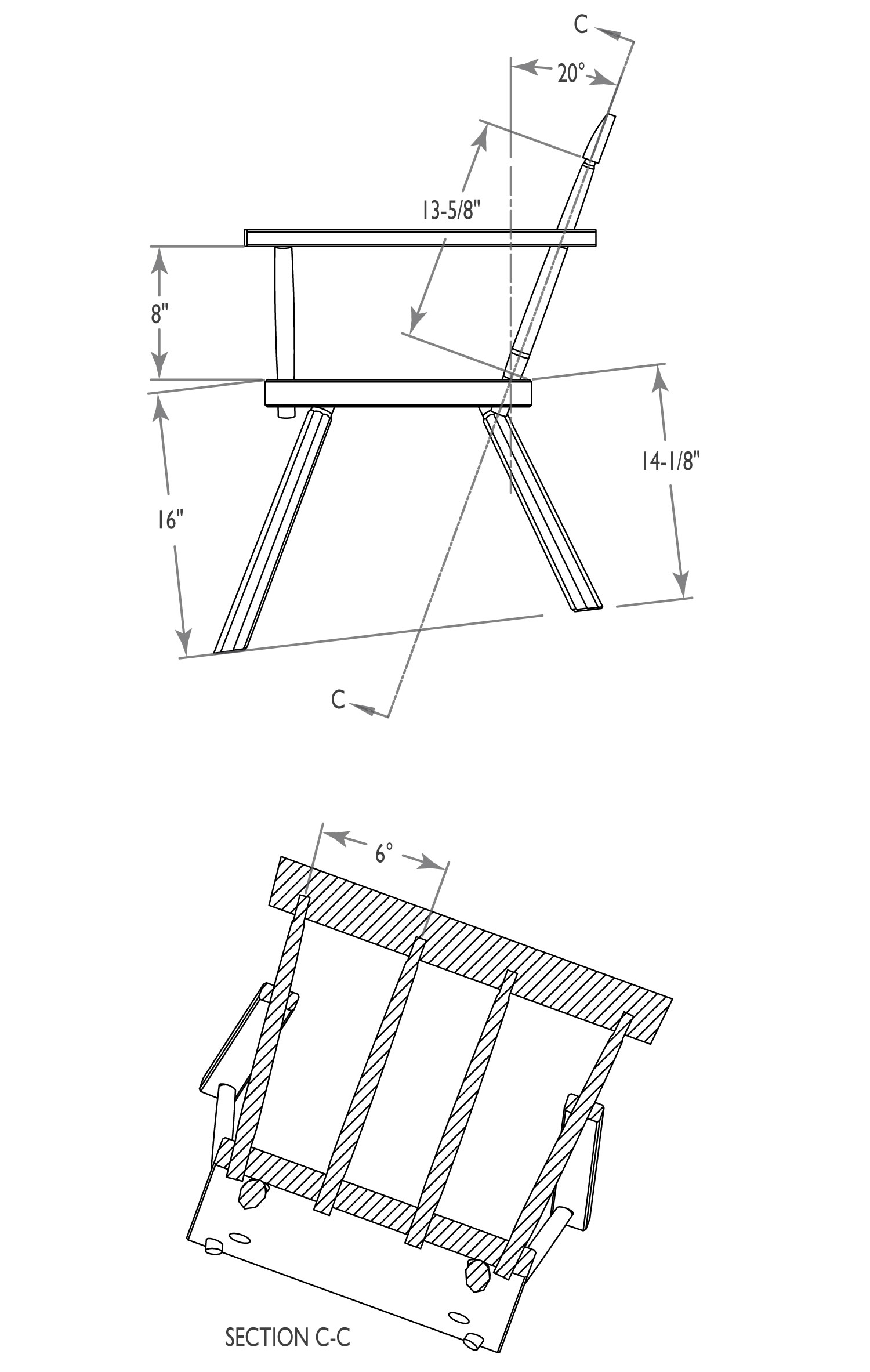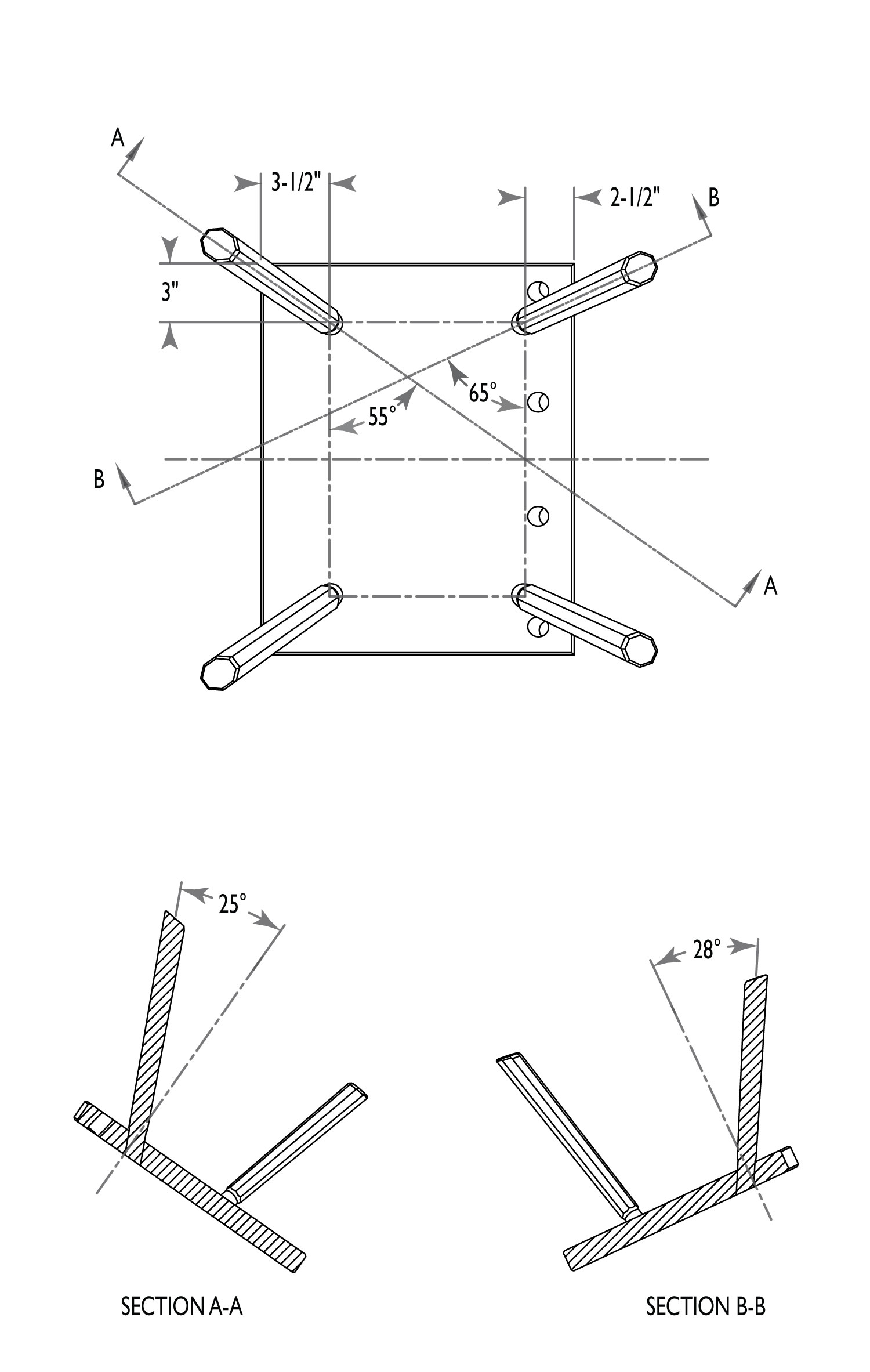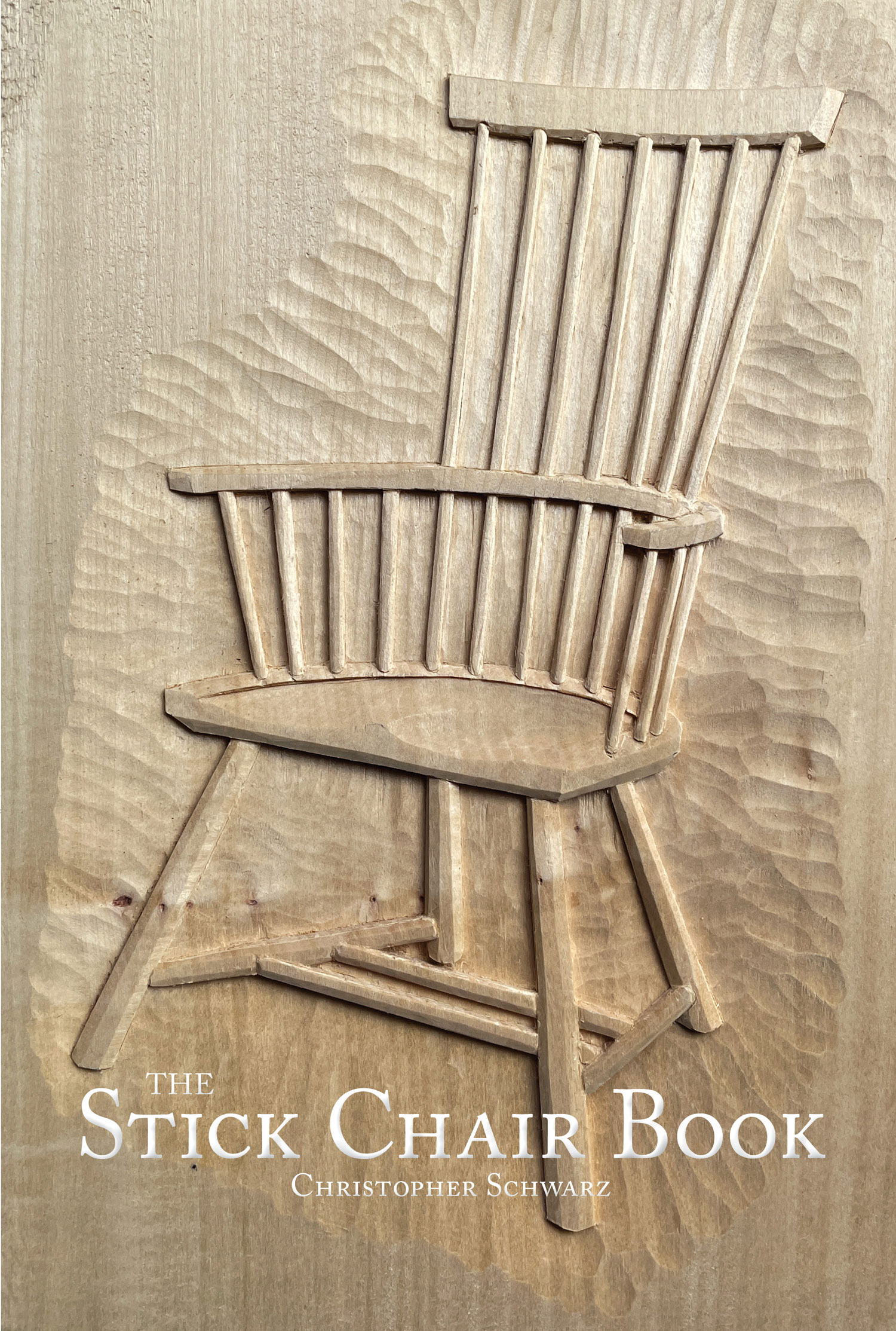
When “The Stick Chair Book” finally evolved from a vague notion into an outline, I knew instantly what I wanted to put on the book’s cover: a carving of a stick chair made by artist, fellow chairmaker and friend Rudy Everts.
Rudy made the carving last year, and it’s one of my most prized possessions. I keep it on a shelf in the front of the shop so I see it every day. I love the way the chair’s appearance changes during different hours of the day. And the carving captures everything I love about the form of these stick chairs, which I’ve been obsessed with for far too long. Though Rudy might dispute me, I think this carving is art.
And, as you can see in the image above, the thing looks fantastic as a book cover.
But then data and manufacturing considerations entered the picture.
During the Great Quiet of the pandemic I spent a lot of time digging into the 14 years of data we have on our books. Our customers and our books are not like the customers and books I knew from my time in corporate media. But I had no idea how different they were.
In the corporate media world, books with dust jackets and beautiful photos do very well. However, our customers see the world differently. No matter what the topic or who wrote the book, books with simpler cloth covers and diestamps are preferred to books with dust jackets and photos on the front. I have looked at the numbers a dozen different ways. It’s not even close.
When John and I started Lost Art Press, neither of us were interested in dust jackets. But Jennie Alexander insisted that “Make a Joint Stool From a Tree” have a nice dust jacket. And so John and I said: OK, we’ll let the authors drive this important aspect of their books. And so we have. And we will continue to do so.
When it eventually came to designing the dust jacket for “The Stick Chair Book,” I knew in my in-denial heart that a cloth cover with a diestamp would be the right approach for this book. It’s a shop manual, and a dust jacket is going to take a beating. Eliminating the dust jacket will allow us to reduce the retail price significantly. And that’s a big deal because this book is huge – it’s well more than 600 pages and in color. And, our readers prefer cloth covers.
So I’ve decided to do something we’ve never done before. When the book is released, it will have a cloth cover and diestamp. But you will also be able to download a free pdf of the dust jacket with Rudy’s carving on the cover. You can send this pdf to your local print shop and the employees can print out a perfectly sized dust jacket for your book.
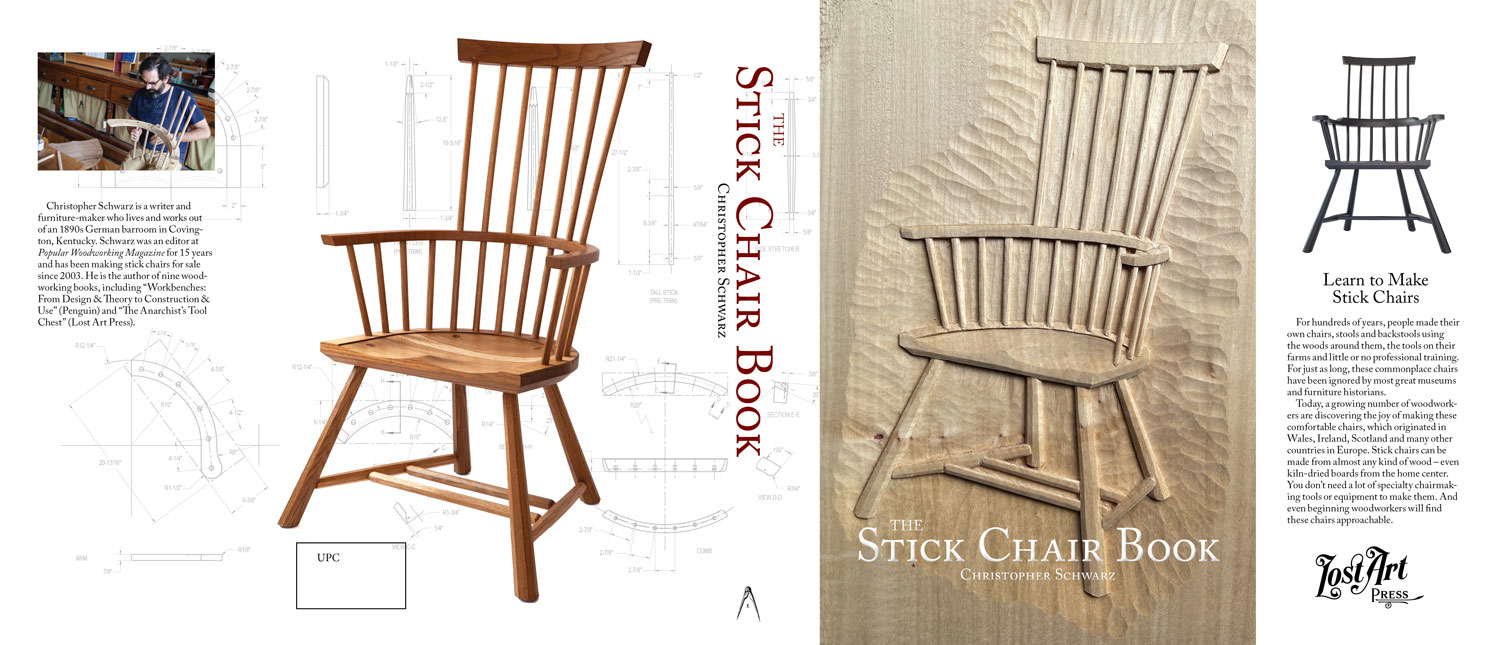
(Side note: We investigated selling the book with and without a dust jacket. The jackets would have to be manually added at the warehouse. It was stupid expensive.)
I hope this is the right path. The book will be more affordable, which will lower the price barrier for some customers. And customers who love a dust jacket can easily make one for themselves (and make another if the first one ever wears out).
On the days when I have to make these hard decisions, I wish I worked at the gas station instead.
— Christopher Schwarz
P.S. The carving is now on the title page in the book, and it looks great.

